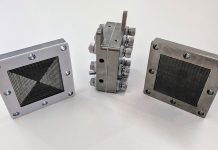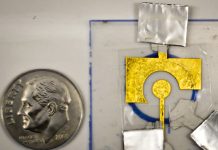
Researchers at the Flatiron Institute, in collaboration with Princeton and Northwestern universities, have cracked the mystery of how swirling vortexes form inside egg cells, which are among the largest single cells on Earth.
This discovery, published in Nature Physics, reveals that these internal twisters help transport nutrients and are critical for the cell’s function and development.
Unlike smaller cells, where molecules can quickly move around by simple diffusion, the enormous size of egg cells makes internal transport challenging.
For instance, in fruit fly egg cells studied by the researchers, it would take a whole day for molecules to move across the cell by diffusion alone.
To overcome this, egg cells develop what scientists call “twister flows,” which act much like tornadoes, swiftly moving material across the cell.
This groundbreaking research was led by computational scientists who used advanced computer modeling along with real-world experiments to understand how these flows develop.
Michael Shelley, director of the Flatiron Institute’s Center for Computational Biology (CCB) and co-author of the study, highlighted the use of advanced numerical techniques, which provided a deeper look into the internal dynamics of egg cells than previously possible.
The team’s simulations showed how microtubules—flexible filaments within the cell—and molecular motors, which are proteins that transport molecules, interact to generate these swirling flows.
The molecular motors carry cargo that exerts force on the microtubules, causing them to bend. This bending motion stirs the fluid inside the egg cell, creating a whirlpool effect that helps distribute nutrients and other molecules efficiently.
Using the SkellySim software developed by researchers at the Flatiron Institute, the team modeled thousands of microtubules and observed how the forces exerted by the molecular motors led to the formation of large-scale flows.
This cooperative bending of microtubules results in the twister-like circulation that spans the entire egg cell, significantly speeding up the transport process.
The research revealed that the swirling flows allow molecules to traverse the egg cell in about 20 minutes—a stark contrast to the 20 hours it would take via diffusion alone.
Reza Farhadifar, a CCB research scientist and co-author, emphasized the ability of the system to organize itself to create these functional flows with just a few components: microtubules, the shape of the cell, and the molecular motors with their cargo.
The implications of this discovery extend beyond just understanding egg cells. Microtubules are crucial components in many types of cells across nearly all eukaryotic organisms, including plants and animals.
They are involved in various cellular functions, such as cell division. By understanding how microtubules contribute to internal cell dynamics, researchers can also gain insights into other cellular processes and potential medical applications.
This research not only demystifies how materials are transported within large cells but also sets the stage for exploring further questions.
For example, scientists are now interested in how these twisters mix the molecules inside the cell, opening new avenues for both theoretical and experimental studies.
With this new understanding, scientists are better equipped to explore cellular behaviors and could potentially apply this knowledge to improve cell manipulation techniques and treatments for various diseases. The team looks forward to further experiments to delve deeper into the role of microtubules in cell biology.



